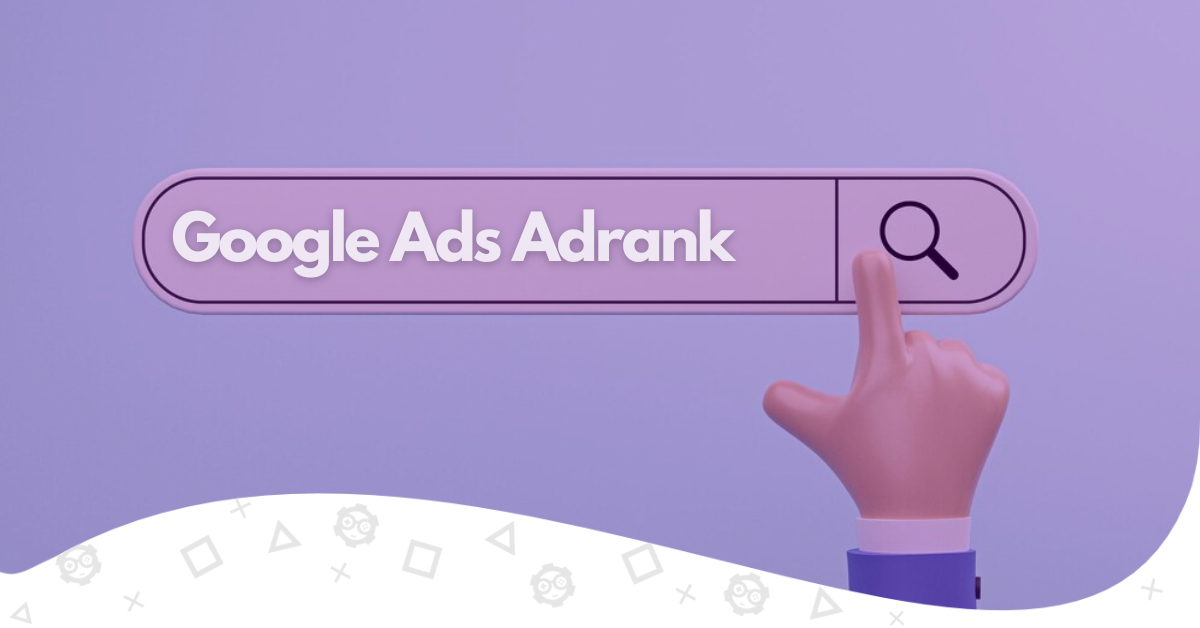Google Ads is one of the main Internet platforms for creating and publishing advertisements across several websites and the search engine. To position the search ads in the best places on the SERPs, Google Ads considers the ad quality and the ad rank, crucial data that can put your ad over or below another ad.
But Google Ads Adrank is a total mystery. Google has never revealed the exact formula of the Ad Rank, but it provides a lot of important information regarding factors and features to consider. So, what metrics does Google use to calculate Ad Rank? How can you use these factors to improve your Ad Rank and better position your ads? Let’s discuss these subjects.
What Is Google Ad Rank?
The official definition of Google Ad Rank is the following: “a value that is used to define your ad position and whether your ads will show at all.”
Consequently, the Ad Rank is crucial when creating an online marketing campaign based on search ads, or inorganic position, the ads that appear at the top of the Google results page.
The higher the Ad Rank you get, the higher your advertisement will appear in the SERPs. Moreover, appearing in a good place in SERPs is ideal for enticing prospects with a high user search intent.
How Does Google Determine the Ad Rank?
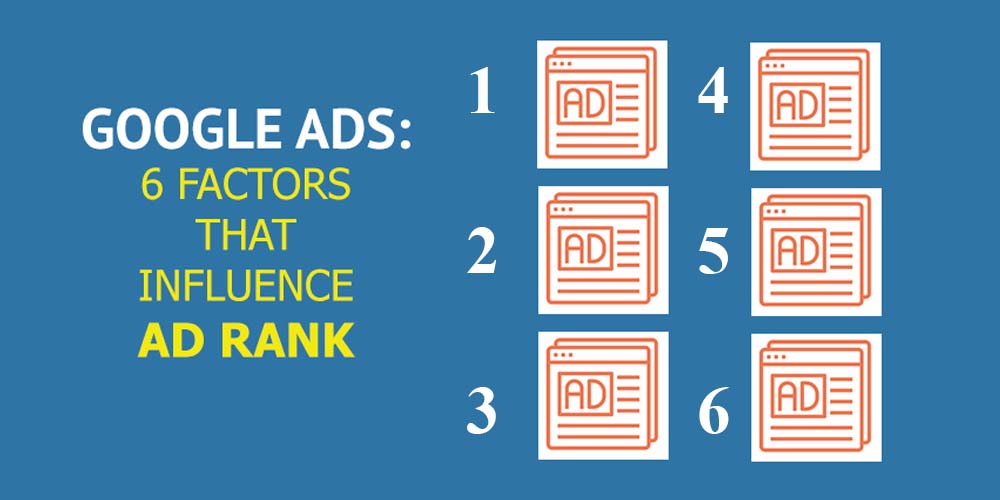
Google performs an ad auction to decide which advertisements are shown and what their positions are in SERPs.
Google mainly uses two factors in its Ad rank formula.
- The maximum cost-per-click, or CPC. The CPC is the price you’re willing to pay when a user clicks a particular ad containing a particular keyword. You can check some extra data about the Maximum CPC bid here.
- The quality score. The quality score is a qualification that Google gives to your website according to some specific criteria. We explain them in a subsequent section.
Although these are two crucial factors, in 2023, there are other relevant factors that Google considers when calculating the Ad Rank.
Google focuses on six main factors affecting ad rank when determining the ad rank.
- Your bid of the keyword. The bid is the money you’re willing to pay to display your advertisement when a particular user searches for the keyword you set a bit. It corresponds to the maximum CPC for a single keyword.
- The quality of ads and landing pages. An ad-relevance landing page is always an important factor in determining the ad rank since the ad drives directly to it. Some factors that determine the quality of the landing page are:
- Mobile-friendly website.
- Landing page speed.
- The ad rank thresholds. Thresholds determine the capacity of your ad to compete in the auction. Thresholds are defined every time an auction is running and depend on the following factors:
- Your ad copy quality. Lower-quality ads have higher thresholds.
- The ad position. Ads appearing at the top of SERPs have higher thresholds than other ads appearing lower on the page.
- The ad assets. Thresholds vary depending on additional pieces of information you insert when creating the ad, such as the location.
- The topic of the search. Depending on the term that the searcher uses, thresholds can vary. For example, the threshold for gaming will probably differ from the threshold for sports.
- Related auctions. In general, thresholds of similar themes are related. It means the threshold for a particular term can be influenced by another threshold of a similar topic.
- The competitiveness of the auction. The more competitive the auction, the higher the Ad Rank if you’re capable of winning the auction. If you can beat multiple other marketers with excellent bids, then your rank will be better.
- The context of the search. Auctions are based on the terms that the searcher inserts, the device they have used, the location and time of the search, the nature of the keywords, and other attributes of the search. This way, Google knows how to sort the search and if your ad fits the criteria. The closer the context, you will receive a higher ad rank.
- The expected impact from advertisement extensions and other ad formats. When creating your ads, Google allows you to add relevant ad extensions, which provide additional information for both the readers and Google bots. Google determines the impact of these assets or extensions on Google’s auction system. With a high impact, you will receive a higher ad relevance.
Google analyzes each keyword you insert according to the above criteria to provide you with an Ad rank.
Since each keyword differs from the other, for every single auction, you can have a totally different ad rank every time a search is conducted.
Why a Good Ad Rank Is Crucial for Your Ads?
Google Ad Rank is the way that Google determines your ad’s position and if they should appear above direct competitor’s ads. The higher your rank in comparison to the competition, the higher the chances that users click on your ads. It means an increasing click-through rate and, in the long term, a better conversion rate.
What Is the Quality Score and How Does It Affect Ad Rank?

Although the Quality Score is not a direct factor, it accounts for things like landing page experience and ad format — and so does Ad Rank. It means you need to pay attention to the Quality Score to calculate your ad rank.
The quality score consists of 3 main components, which are as follows;
- Landing Page Experience;
- Ad Relevance;
- Expected CTR.
In this sense, if your Quality Score is over the average, then your ad rank will probably be higher than the average.
Best Practices to Get a Good Google Ad Rank
Getting a good Ad Rank is more an art than a technical skill. Consequently, you need to know and manage the crucial aspects we’ve mentioned earlier in this article. Still, below, we’re providing you with some tips to rank higher and maybe obtain the highest Ad Rank possible.
- Better Ads Mean Better Ad Rank
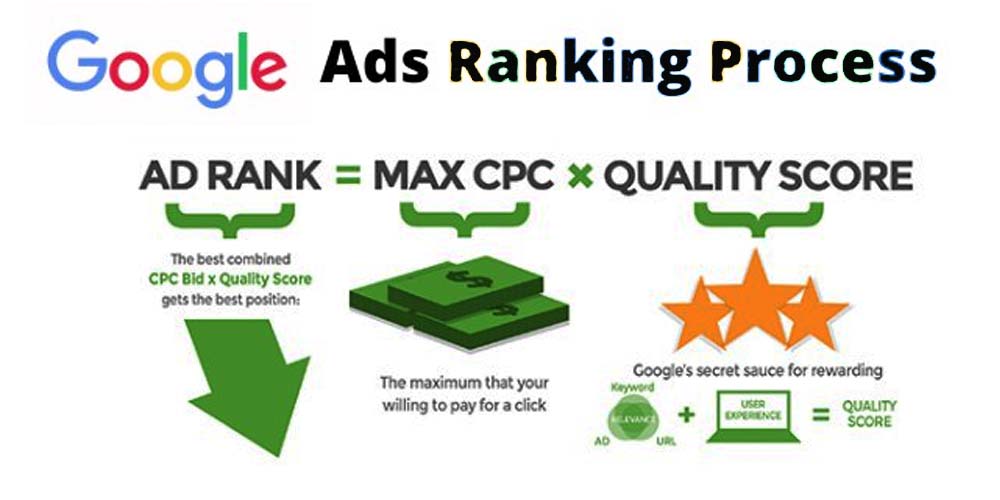
Source: Quora
In a few words, one of the best things you can do to improve your Ad Rank, and in consequence, the position of your ad in the Google search results, is to create hyper-relevant ads.
But what exactly is a hyper-relevant ad?
A hyper-relevant ad is an ad that resonates with the audience and truly reflects the benefits and solutions that the product gives to the consumer. That said, you should pay special attention to any of the factors that build the ad, such as the heading and the description.
Your heading should always contain a powerful keyword in the industry, preferential to the one you bit when setting the ad. Of course, you should also focus on the structure of the header and mention some benefits that meet the expectations.
In the description, you should include benefits and features that make your product unique or why it’s important for the industry. You must also include a call-to-action for searchers to feel tempted to click the ad.
- Work Hand-to-Hand with a Professional Marketing Agency
As we know, understanding all these factors and how Google calculates the Ad Rank can be a bit overwhelming. At GamerSEO, we are committed to getting the best ad rank for our clients.
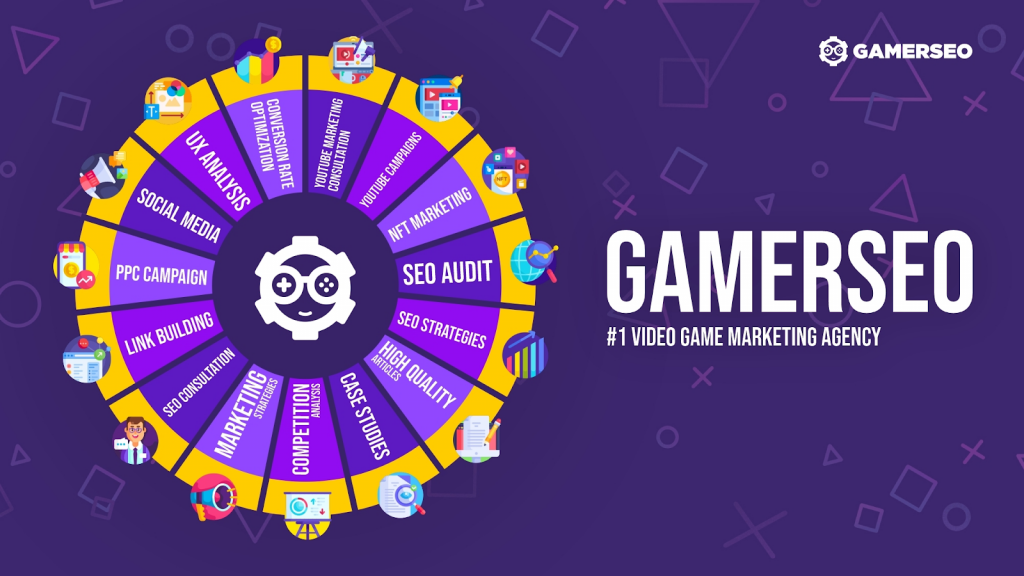
=In GamerSEO, we will take off your PPC campaign and marketing strategies, ensuring that your budget has the best results. It means we will establish the minimum and maximum bid you should pay for keywords, as well as create the best copy of your landing page to help you reach the highest Quality Score. Both practices will ensure you a high Ad Rank with a greater possibility of appearing in the best spot on the Google search results page. Send us a message via our contact form to discuss all the details regarding your Google Ads marketing strategy.
- Focus on Ad Extension Content
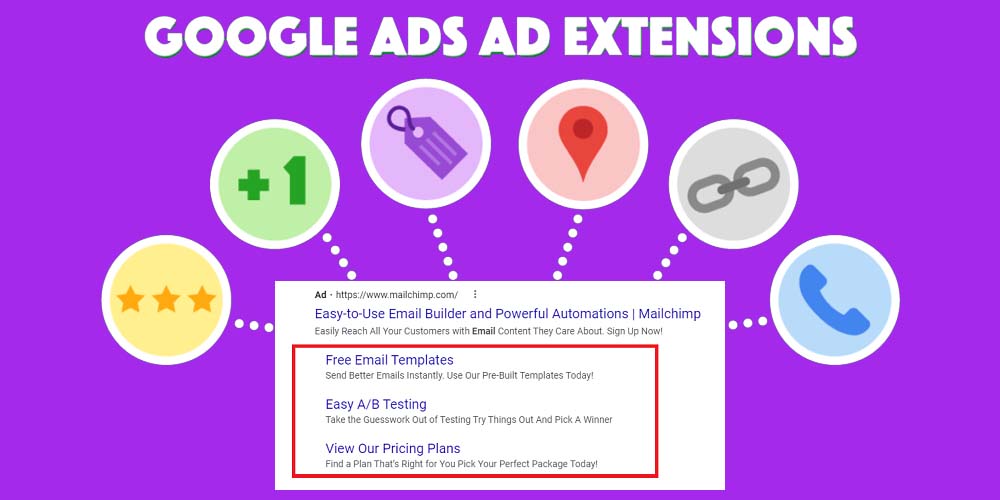
oogle rewards advertisements that include ad extensions by boosting their position. In this sense, Google enhances ads with extensions like site links or locations.
But what are ad extensions? These correspond to pieces of additional information that you can attach to your ad groups or particular ads. This way, you make them more informational and compelling. Some crucial extensions you can include are the following:
- Sitelinks. These are hyperlinks to subpages that Google provides to your site to drive users to different pages within your website.
- Location (and Affiliate Location). When creating your ad, you need to specify the location of your business and the area of influence.
- Callout. Promotions or offers to shoppers that can improve your text ads and ad matches.
- Structured Snippet. These assets highlight particular aspects of your business, product, and services. Structured snippets appear beneath your advertisement as a header and a list of values. These snippets are shown with ads on the search network.
- App. You can indicate whether your brand, product, or service has a related application. This practice commonly elevates the actual CPC.
- Price. When people look for a particular product or solution, they pay special attention to the price. In this sense, including the price is an advantage, especially if you’re releasing shopping campaigns.
- Image. When creating display ads, images gain the most attention. Advertisers should include images that reflect the reality of the product. This way, their ads get more clicks.
- Lead Form. These forms help customers to submit their information to contact directly with your app or brand. This way, you can capture the interest of potential customers.
- Promotions. These are commonly displayed beneath the ad and are great for highlighting sales on your website. You can pinpoint promotions and offers.
- Call. The call extension allows potential customers to contact you directly via phone call to understand better your brand, product, or solution.
- Create Better and Engaging Landing Pages
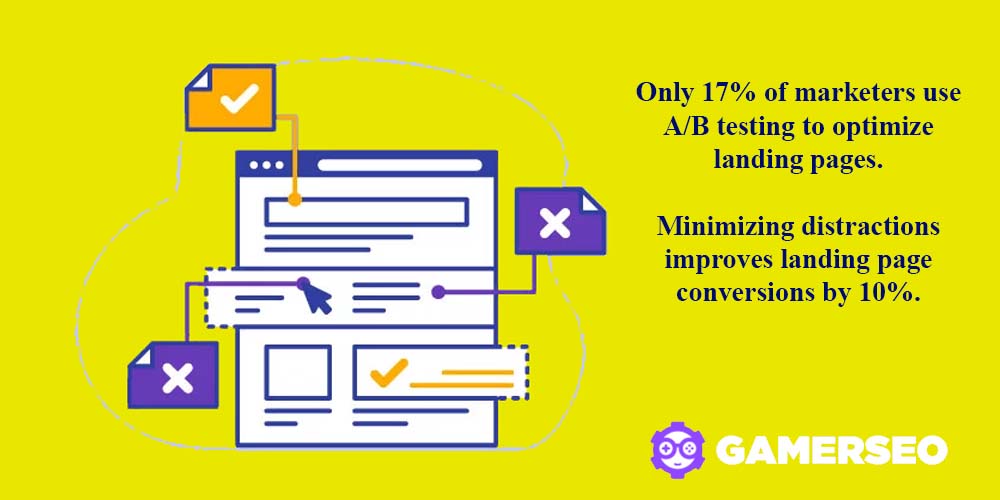
Source: Emailvendorselection.
Marketers should know that landing pages are just as important as the other pages on their websites, i.e., the main page or a blog. Thus, a landing page should contain high-quality content, just like a blog or a marketplace. In a nutshell, you should optimize your landing page from any point of view by doing the following:
- Use an SEO approach. It means utilizing relevant industry keywords on a good density, relevant headers and subheadings, internal linking, and other common strategies. Besides, the more fresh and unique the content, the more chance of getting a good position in SERPs.
- Set a responsive design. The landing page should consider what device a user is on. This way, if the user accesses the landing page through a mobile device, the landing page should be displayed in such a way that the experience is equal to the user access on a desktop machine.
- Avoid “white space” on the page. Avoid unnecessary space. It’s always better to use a short landing page with clear data and a call-to-action button than a large landing page with unclear information and difficult navigation.
- Insert a clear call-to-action (CTA) button before a user has to scroll. A landing page is the last push to encourage potential customers to complete a purchase. As such, you shouldn’t be afraid of inserting a call-to-action button to enhance the purchasing process.
- Create a fast-speed landing page. Performance is crucial in both the user experience and the Quality Score. Remember that Google sends the bots to read and index your landing page to give it a specific score. Besides, if the landing page does not charge properly, the users will likely leave the page.
Summing It Up
There are several factors when it comes to defining Ad Rank. It makes the process of calculating and achieving a good rank challenging and intuitive. The importance of the visitors, the search terms they use, the expected click-through rate, the quality of a good landing page, the user signal, and many other elements are obvious. Thus, managing them all is vital to getting a good position in SERPs.
These are enough reasons to work together with a professional marketing agency like GamerSEO since it will help you understand all these factors to get the position you expect. It means giving your business the best service to stand out over direct competitors.

A PPC specialist who started with organic social media. For several years, the core of his activities are:- Google Ads, Microsoft Ads, Meta Ads, TikTok Ads, Twitter Ads, Linkedin Ads. He has led campaigns with a global reach, e.g. for FootballTeam, G2A, ETOTO, as well as many smaller campaigns in the sports, construction and financial industries. Has full focus on ROAS. Privately, a fan of football, history of wars and Star Wars.

